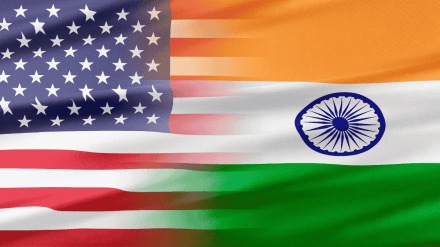The July 9 deadline for potential 26 per cent tariff is looming ahead and all eyes are on the ongoing India-US trade negotiations in Washington. Policymakers and trade experts are closely watching the outcome, which could shape the future of bilateral trade ties.
US-India trade talks: What’s the deal about?
India and the US are negotiating an interim trade deal that could eventually pave the way for a full-fledged bilateral agreement. According to Financial Times, the two sides have already agreed to reduce tariffs on thousands of items.
India has reportedly agreed to import more US natural gas to help reduce its trade surplus with the US, which stood at $41.2 billion in FY24-25. The country has also agreed to import American farm goods such as nuts and fruits, reports Financial Times.
In return, India is pushing for tariff relief on key labour-intensive exports like textiles, gems and jewellery, leather goods, garments, plastics, chemicals, shrimp, oilseeds, grapes, and bananas.
What are the key concerns?
The US is seeking greater access to India’s agriculture and dairy sectors, including genetically modified crops. However, India is treading cautiously on this front. The dairy sector alone supports over 80 million people, many of them small farmers, making it politically sensitive.
India has previously protected its dairy sector in trade negotiations with the EU, and experts say it is likely to do the same here. The US is also looking for duty concessions on industrial goods, electric vehicles, wines, and petrochemical products.
Mini-deal likely before deadline; tricky areas deferred
Media reports and industry bodies suggest that a first-phase “mini-deal” could be signed before July 8. Contentious sectors like agriculture and dairy are expected to be left out for now and addressed in later phases.
“We will not have 100 per cent winners,” said the Confederation of Indian Industry (CII) on Thursday. “FTAs will be done in phases, and sectors with greater political ramifications will be taken up later.”
According to NDTV, citing sources from NDTV Profit, agriculture and dairy are likely to be excluded from the interim deal due to concerns about rural livelihoods and food safety.
What happens if there’s no deal by July 9?
If a deal isn’t signed by July 9, Indian exports to the US could be slapped with additional tariffs of up to 26 per cent, as per the April 2 notification from former President Donald Trump. These tariffs were suspended for 90 days to allow negotiations.
However, trade analysts believe the impact may be limited. India continues to enjoy a significant trade surplus with the US. According to Global Trade Research Initiative (GTRI), India exported goods worth $17.25 billion to the US during April–May this fiscal, while imports stood at $8.87 billion.
What’s next? Interim deal could set the stage for full trade pact by
If the interim agreement goes through, it could unlock the path to a comprehensive trade pact by September. Both countries have expressed intent to finalise the first tranche of a full deal by autumn.
During Prime Minister Narendra Modi’s visit to Washington earlier this year, the two nations also committed to more than doubling bilateral trade to $500 billion by 2030.
